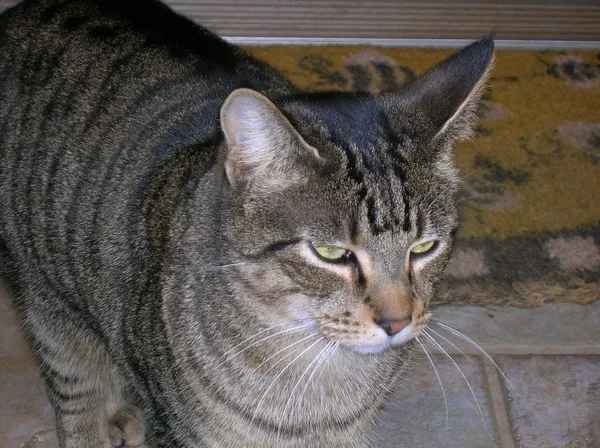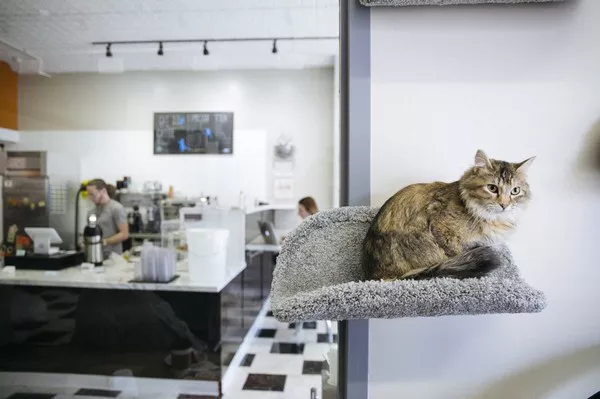A few years ago, Erica returned to her hometown of Hong Kong from New York and began exploring the Sheung Wan district, a vibrant area near the bustling Central financial district. Known for its shops filled with dried seafood like scallops and prawns, Sheung Wan also boasts a less expected attraction: its shop cats. It was during one of her walks through the neighborhood that Erica first encountered Fei Zai, a tortoiseshell tabby cat lounging amidst the street’s hustle and bustle.
“Fei Zai is basically the king of the area,” Erica recalls fondly. “He’s very sociable, loves to patrol, and is well-loved by everyone around here.” Known as “Chubby Boy,” Fei Zai quickly became a local celebrity, embodying the spirit of the area’s shop cats—each serving as an unofficial guardian of their respective shops.
As Erica continued to explore her new neighborhood, she began photographing Fei Zai and other local cats, sharing their pictures on an Instagram account she created, Sheung Wan Cats. The account highlights the personalities of various shop cats in both Sheung Wan and the neighboring Sai Ying Pun district. The photos feature ginger tabbies lounging on counters, kittens peeking through doorways, and cats perched atop shelves, overseeing dried squid and eels. “Sheung Wan is one of the oldest areas in Hong Kong,” Erica explains. “It’s where merchants have traded goods like dried seafood and Chinese herbal medicines since the 19th century.”
Despite the influx of trendy new cafes and eateries in the area, Erica notes that these modern businesses tend to keep cats away, citing health and safety regulations. Traditionally, however, cats have played an essential role in local shops, especially those selling dried seafood, which attracts rats. “Dried seafood is a delicacy here and quite expensive. If rats infest the shop, it results in significant losses,” Erica says. “So the cats are there to catch the rats at night, protecting the valuable stock.”
Erica has built close relationships with local shopkeepers and their cats, learning about their quirks and personalities. “I’m normally an introverted person, but through this project, I’ve gotten to know the shop owners better. They tell me about their cats’ health, or when they notice changes in their behavior,” she says.
Her Instagram account has also proven valuable in more practical ways. Erica frequently receives messages about lost cats or cats seen wandering near shops. Thanks to her network, she has helped reunite missing cats with their owners. “The sense of community has been the most rewarding part of this whole experience,” she reflects.
In a district filled with bustling shops and busy streets, it’s clear that the shop cats of Sheung Wan aren’t just a charming quirk—they’re an integral part of the community.
Related Topics
























